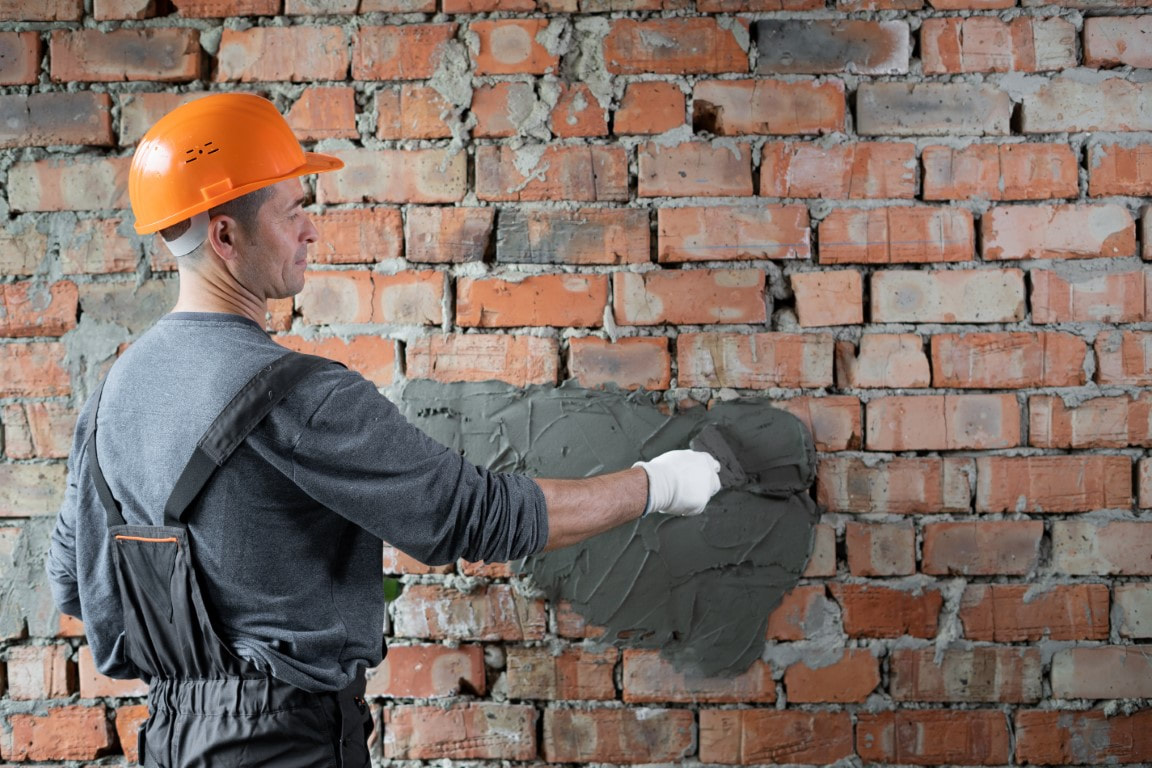Unlocking the Keys of Sustainable Masonry Construction Practices for Eco-Friendly Structures
In the realm of contemporary construction, the quest of lasting techniques has actually come to be critical. Among the myriad approaches to eco-friendly building, sustainable stonework building attracts attention as a time-tested and durable approach that holds a wide range of untapped capacity. From the choice of materials to ingenious building and construction strategies, the keys to accomplishing sustainability within masonry building are complex and intriguing. By checking out the benefits, products, strategies, and future fads of sustainable masonry, a deeper understanding of how these practices can shape the future of environmentally friendly buildings emerges.
Benefits of Sustainable Stonework Construction
Welcoming sustainable stonework building and construction techniques not only decreases environmental influence however likewise offers long-term financial advantages to building contractors and communities. By using products like recycled blocks, obstructs, and rocks, builders can significantly decrease the carbon impact of their tasks while promoting source effectiveness. Furthermore, sustainable stonework building and construction techniques, such as proper insulation and thermal mass buildings, can enhance energy performance within buildings, causing lowered operational expenses over time.
Furthermore, the resilience and resilience of stonework structures add to long-lasting economic advantages. Structures created making use of lasting masonry methods often require less repair and maintenance, equating to set you back financial savings for building contractors and homeowner. The longevity of masonry products additionally guarantees that structures stay steady and secure, decreasing the requirement for regular renovations or replacements.
Eco-Friendly Stonework Materials
Utilizing environmentally friendly stonework products is a pivotal step towards boosting the sustainability of building methods and lessening ecological effect while taking full advantage of lasting economic advantages. Sustainable stonework products are sourced, generated, and used in a way that lowers overall environmental effect. Lasting concrete obstructs include recycled accumulations and may feature better insulation residential or commercial properties, contributing to power performance in buildings.
Moreover, all-natural products like adobe, rammed planet, and straw bales supply outstanding thermal mass buildings, decreasing the requirement for heating and cooling energy. These materials are usually locally available, promoting local economic situations and lowering transportation-related carbon emissions. By picking green stonework materials, building projects can dramatically decrease their environmental impact and add to the production of healthier, a lot more lasting developed atmospheres.
Energy-Efficient Masonry Strategies
Energy effectiveness plays a critical duty in improving the sustainability of masonry construction methods. By executing energy-efficient stonework techniques, builders can considerably minimize Find Out More the general energy intake of a building, causing lower operational costs and a smaller ecological impact. One vital energy-efficient masonry method is making use of thermal mass, which entails including dense products like concrete or brick into the structure's framework to soak up and save warmth. This helps regulate indoor temperature levels, reducing the demand for mechanical heating and cooling systems.

Innovations in Lasting Masonry
Recent developments in sustainable stonework techniques have caused ingenious techniques that are improving the building and construction market. One such innovation is the development of self-healing concrete, which uses germs embedded within the concrete to heal cracks autonomously. This advancement not just minimizes maintenance expenses yet also enhances the toughness of masonry structures, contributing to their sustainability.
An additional notable development is the use of recycled accumulations in stonework building - masonry contractor. By incorporating products such as crushed ceramic waste or recycled glass right into concrete mixes, home builders can lower the environmental effect of building projects while preserving structural integrity. This technique not just draws away waste from land fills however additionally conserves all-natural resources, making it a vital development in sustainable stonework building
Additionally, the integration of digital design devices, such as Building Information Modeling (BIM), is changing the way stonework frameworks are planned and built. BIM permits more accurate computations, minimized material wastefulness, and improved energy efficiency, eventually causing even more lasting building practices. These innovations jointly symbolize a promising future for lasting masonry construction in the age of environmentally friendly structures.
Future Trends in Masonry Sustainability
With the ingenious strides made in sustainable masonry practices, the future trends in stonework sustainability are positioned to more reinvent the building sector. Among the essential patterns shaping the future of masonry sustainability is the raised integration of modern technology. Advancements such as Building Information Modeling (BIM) and online truth simulations are being made use of to enhance stonework construction processes, resulting in lowered material waste and enhanced power performance in buildings.
Additionally, the advancement of unique lasting materials is readied to play a considerable role in boosting the eco-friendliness of masonry building. masonry contractor. Technologies like self-healing concrete, recycled aggregates, and bio-based binders are acquiring traction for their capability to minimize ecological influence while maintaining structural honesty

Final Thought
In final thought, lasting masonry building and construction methods provide numerous advantages for eco-friendly buildings. masonry contractor. Technologies in lasting stonework are constantly being developed to better enhance the ecological efficiency of structures.